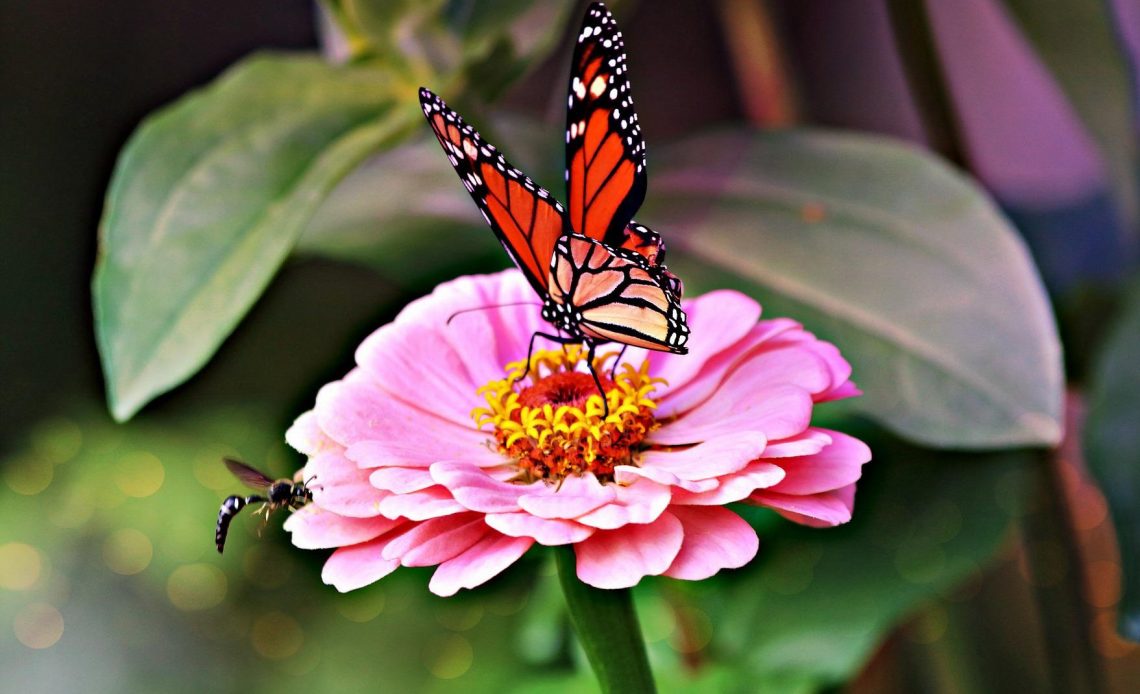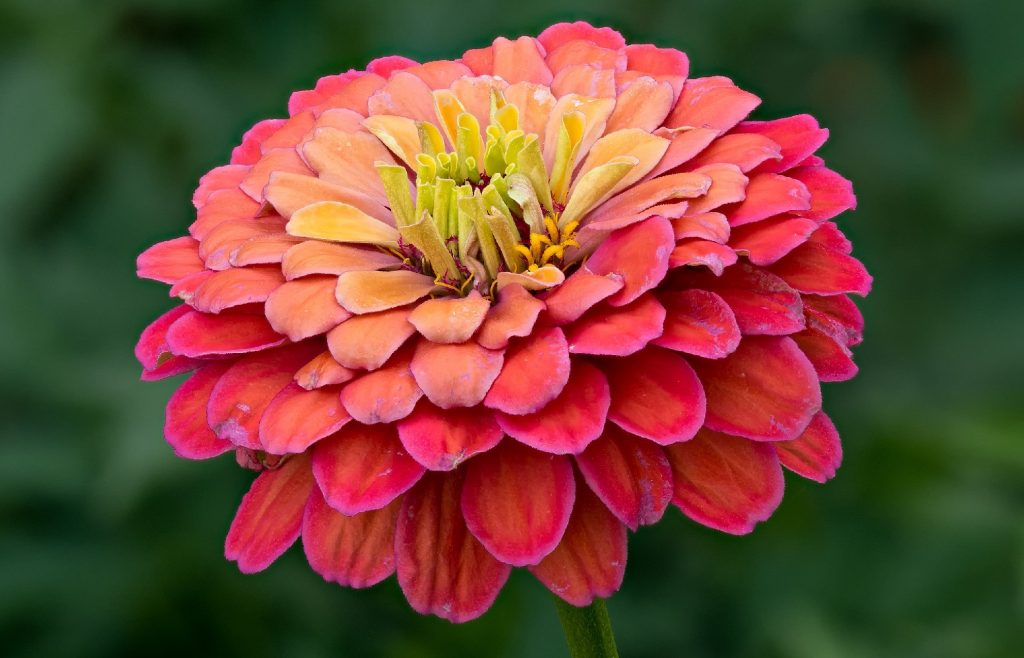

We’re here to help! Wild Yards is a completely free website that is 100% dedicated to helping you create a wildlife-friendly, sustainable yard. Read more
WildYards is reader-supported. When you buy a product through a link on our site, we may earn a comission. Every product is independently selected by our (obsessive) editors and our reviews are unbiased and objective. Read more about our mission or our privacy policy.
Zinnias are absolutely stunning plants that also happen to be many gardeners’ favorites. They are easy to grow from seed and boast delightful flowers with seemingly endless, colorful petals. They are also famously attractive to wildlife, notably many pollinators. But – do butterflies like zinnias, in particular?
Butterflies love zinnias. It’s all about the color and the shape. You’ll likely find many insects flocking to these nectar-rich plants. However, double-bloom and dwarf zinnias don’t always have the same attractive power.
Will zinnias attract butterflies?
Generally, zinnias will attract butterflies thanks to their bold pinks and purples, though you’ll need to watch out for specific species. Single-flowered zinnias will likely attract more butterflies than most, as they are easier for these pollinators to access.
Zinnias are shrubs that will normally persist well within USDA zones two through eight and fare well in the heat. Butterflies tend to flutter around flowers in the open, away from shade, and at waist height (and taller). This may be why dwarf zinnias, of all species, don’t seem to attract many visitors.
Butterflies also love zinnias, thanks to their rich nectar content. A garden replete with these flowers will normally feed a variety of pollinators, though bees will tend to avoid the reddish specimens thanks to selective color-blindness. Hummingbirds, however, will likely compete with butterflies for nectar – so it will certainly be a good idea to grow other blooms alongside them.
Don’t worry – it’s doubtful hummingbirds will eat butterflies, as bullish as they can be!
Zinnia petals arrange in different sizes but are often flat enough for butterflies to rest on while feeding. This is a must for these insects – they can’t feed in mid-air like hummingbirds.
What is a butterfly’s favorite flower?
Zinnias are high up on butterflies’ flower favorites; however, you can also attract them with beautiful sunflowers, snapdragons, and lantanas.
There are no one or two flowers that butterflies like the most. They will happily flutter around flowers that are bright and bold in color, and which largely grow in full sun. Butterflies will sometimes head towards the shade, but only when they need to cool down.
What insects do zinnias attract?
Some of the most common minibeasts found around zinnias include ladybugs, beetles, and wasps. While some of these bugs may not seem too pleasant, they are all vital pollinators – meaning it’s worth keeping your zinnias growing.
Unless you see your zinnias start to take on damage or get eaten, there’s no viable reason to ward animals away from these flowers. You should certainly avoid spraying your zinnias with chemicals and pesticides, as they can cause harm to flora and fauna alike.
When you grow zinnias, be prepared to welcome a veritable insect zoo – but they all have a part to play in your wild yard’s ecosystem.

How to grow your own zinnias
Thankfully, growing zinnias is easy – as mentioned, they are sun lovers, meaning around eight hours of full rays should more than satisfy their needs. Ideally, you should start seeding zinnias in the springtime, giving them time to grow, root, and bloom as the summer approaches.
You’re also going to need to keep your zinnias in one spot – they don’t cope well with being moved around. Try to seed them in a spot with well-draining soil and add compost for extra nutrition. They tend to sprout up very quickly, so don’t be surprised to start seeing green shoots within a week.
Spacing out zinnias is a must – if you buy these flowers as seeds, check the recommendations on the packet supplied. Spacing will vary from species to species, but ideally, all will only need a hole of up to four inches in depth.
Zinnias prefer moist but not waterlogged soil. Therefore, careful watering is recommended in dry periods. It’s also good to deadhead these flowers regularly so that they can keep growing back strong.
As mainly annual flowers, dying zinnias will need clearing away when winter arrives. Gather up any remaining seeds to save for the next season, and begin again!
Zinnias are amazingly rewarding flowers that easily attract butterflies. Within a few weeks of planting in spring, and with careful watering, it’s highly likely your sunny blooms will start welcoming flutterers across the garden.
